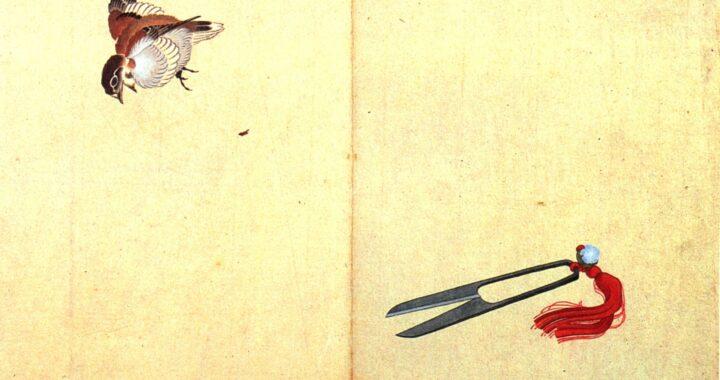Hello, my name is Lana and I am intern #167. I came to Wazuka and Kyoto Obubu Tea Farms at the very end of the winter. Because of that, I was lucky enough to see the nature wake up and birds start singing. One of my co-interns mentioned that our Kukichas were named after the birds in the area because the tea branches and veins look like small nests. I was intrigued by it and while spending time outside, started to notice the mentioned birds. That inspired me to write this short introduction to each of them. There is an audio recording above each picture which I hope will further help to imagine this small birds in their natural habitats.
SUZUME – Passer montanus
Order: Passeriformes Family: Passeridae
Description: A small bird, 12.5- to 14-cm long with a rich brown-colored head and a hint of copper. There is a black patch on the cheeks and a double white bar across the brown wings. Males and females are almost identical in size and plumage. On the ear coverts there is a distinctive triangular black patch, and the chin and throat are also black. In summer, the bill is gray-blue; in winter almost black. The legs are pale brown and the short tail is almost always cocked. The tree sparrow’s call is a modest “chip,” and the song is a more musical arrangement of “chips” and “chirps.” Where to find them: the tree sparrow is found all over the islands, from Hokkaido to Okinawa, tending toward more rural areas, large gardens, open farmland, hedgerows and lone trees and small woods such as the ones found in Wazuka. It likes nest boxes and will also live on coastal cliffs. Tree sparrows sometimes build a domed nest inside the old nest of a larger bird, such as a magpie. Its slightly larger and bolder cousin, the house sparrow, is more common in urban areas. Tree sparrows are also found across the rest of Asia, and Europe. Food: they pick seeds both direct from trees and from the ground, but also enjoy an insect as well. Special features: In most cultures where it lives, it has been incorporated into folklore. The most famous Japanese fairytale involving sparrows is “Shita-kiri Suzume (The Tongue-cut Sparrow),” in which a kind old man helps an injured sparrow but his greedy jealous wife goes and ruins things.
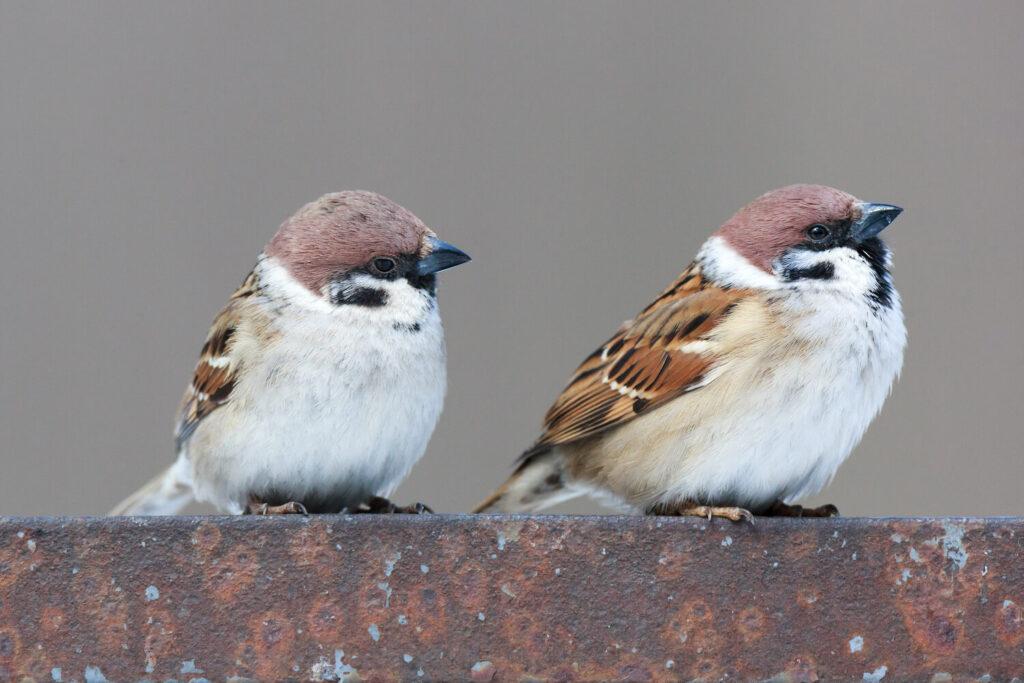
TSUGUMI – Turdus eunomus
Order: Passeriformes
Family: Turdidae
Description: Tsugumi is a mid-sized thrush. The two sexes have different plumage (sexual dimorphism). The male has a black head, breast, back, wings and tail, and a white underside with black spots in the upper belly and flanks. The legs, bill and thin eye-ring are yellow. The female is brown above and has a white throat, breast and belly, washed with rusty orange on the flanks and black spots. Where to find them: Tsugumi is a migratory bird. It breeds in central China and Japan, arriving in Japan by April or May; it winters in coastal southern China (including Hainan) and northern Laos and Vietnam leaving its breeding grounds around October. It occasionally turns up as a passage migrant in Taiwan, and has been vagrant in Thailand. The species is usually found in forests and woodlands, either deciduous or mixed deciduous and coniferous in its breeding habitat, but also forest and even gardens and parks. The species was once split into two subspecies, with birds breeding in China being treated as the subspecies T. c. lateus,, but today differences are attributed to natural variation and the species is treated as being monotypic. Food: Japanese Thrushes generally forage for insects, chilopods and earthworms on the ground, but occasionally catch flying insects in the treetops. They also eat the fruits of ivy, honeysuckle and cherry. They primarily feed earthworms to nestlings.
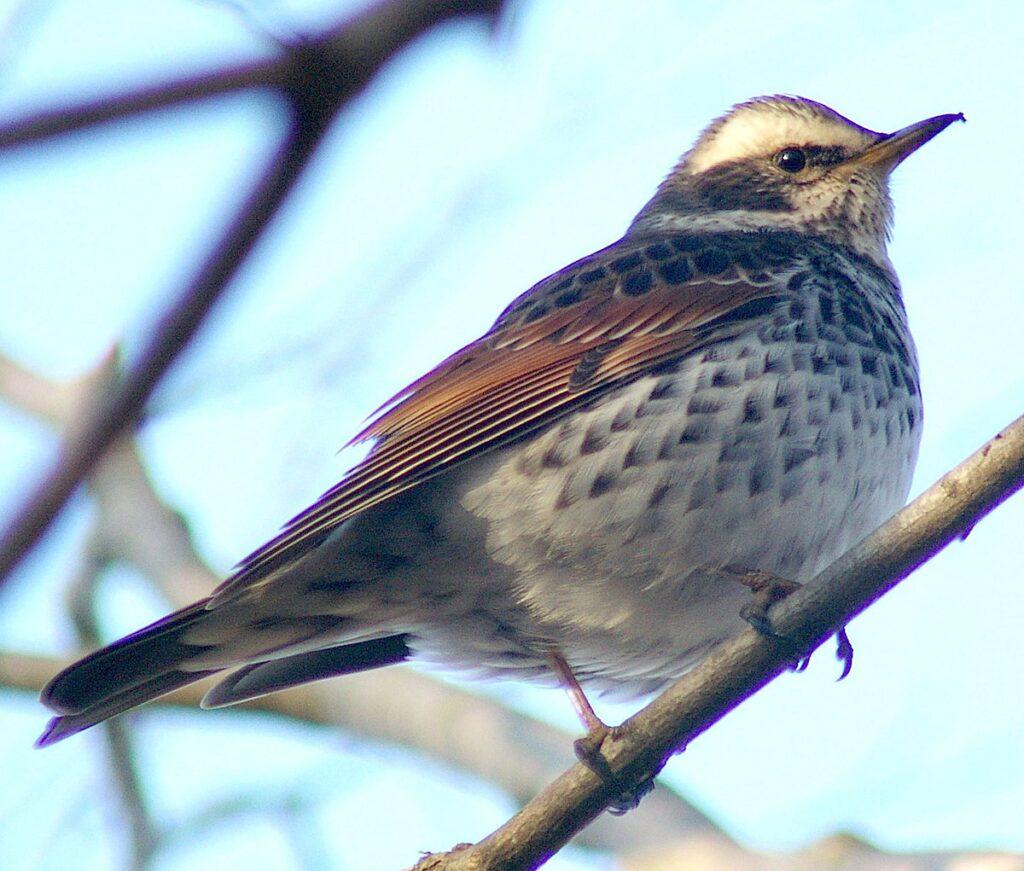
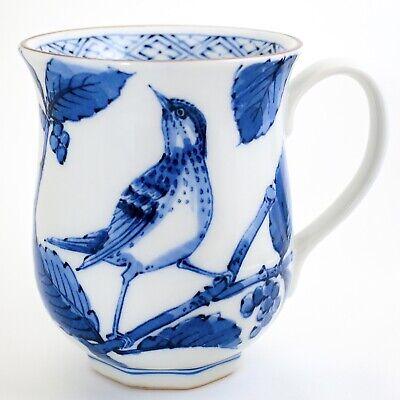
MEJIRO – Zosterops japonicus
Order: Passeriformes Family: Zosterpidae
Description: The white-eye is a small, delicate bird, with an olive-green upper body, wings and head, and a gray to pale-brown belly. The distinguishing feature is the bright-white eye ring made of feathers (the Japanese name means “white eye”). It is only about 11 cm long and weighs around 10 grams. It has a fine, sharp bill and a brush-tipped tongue. The white-eye is also known for its beautifully melodic song, especially in the mornings. Where to find them: Mejiro is a common bird, found all over Japan, including Okinawa. It lives in forests and woods, gardens and parks and even in mangroves in the south. It is rarely seen on the ground, as it prefers to be in trees. Mejiro also seems to enjoy the company of other white-eyes: from July to February these birds commonly form flocks numbering more than 200. Food: They are omnivorous, foraging in vegetation at all levels from the canopy to the tree trunk and in dense leaves. They pick off insects when they find them under leaves, and insect larvae by probing in bark. Mejiro also eats fruit and sap from trees and flowers. They play an important part in dispersing the seeds of berries they eat and have recently been identified as the main pollinators of camellias. No other temperate-living bird is known to play so important a role in flower pollination as Mejiro. Special features: Mejiro often groom each other. Although preening the feathers for mites and ticks might supplement the diet, the main reason is to form bonds during flocking, and most importantly, during courtship. Pairs are loyal and remain together for several years, raising up to three broods of two to five chicks per year. They build a nest (in a tree, naturally, 1-30 meters above ground), using moss, spiders’ webs, lichens and mammalian fur. The pairs are strongly territorial and use several displays to other birds to communicate their status. These include aggressive wing-fluttering, wing flicks and beak snaps. The males sing loudly to establish and maintain the territory. Some territories are small (1,200 sq. meters), others rather large (3 sq. km), which might account for the effort the male puts into singing.
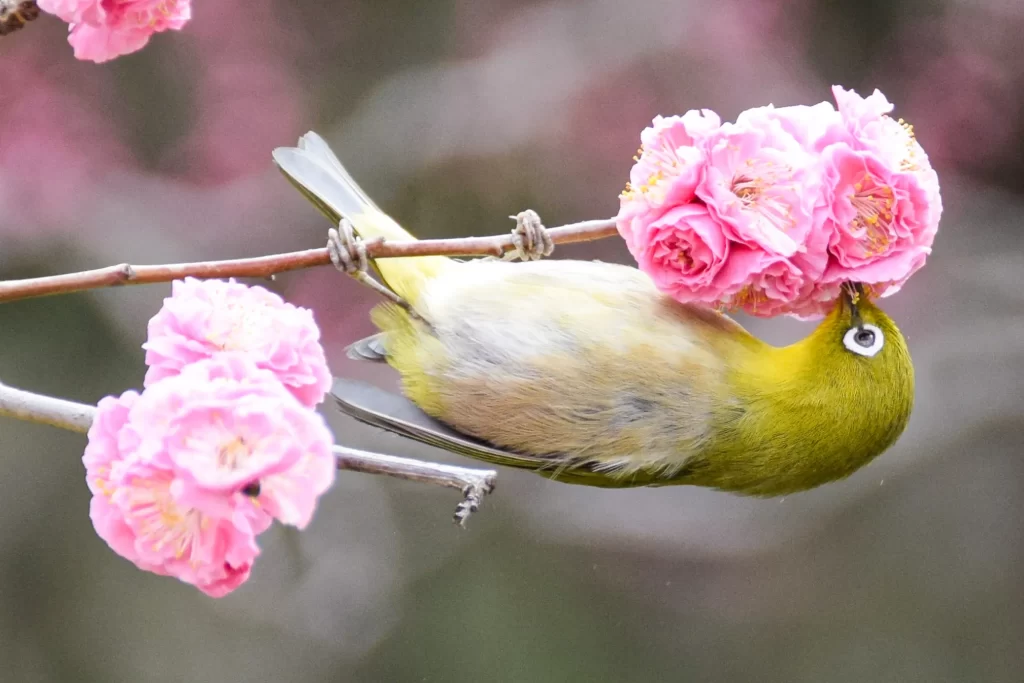
TSUBAME – Hirundo rustica
Order: Passeriformes Family: Hirundinidae
Description: A common and easily recognizable bird, barn swallow has long, pointed wings and deeply forked tails. The feathers on the back and wings are a metallic dark blue; the underside is white or cream. The face is scarlet red. Both sexes look similar, although males (79-106 mm) are longer than females (68-84 mm). Males also have longer tail. Where to find them: Barn swallows breed all over Japan during the summer, arriving in April from their winter stay in Southeast Asia, including Indonesia and Micronesia. Swallows construct bowl-shaped nests from mud mixed with saliva and grass, often in caves and under the eaves of barns and houses. In Japan it is considered good luck to have a swallow nesting around the house. We were lucky enough to have 2 nests above the entrance to the Hojicha house. Swallows prefer open habitats with lots of room for aerial manoeuvres. Food: Insects, mainly bluebottles and horseflies. Swallows catch insects on the go, flying fast and low over the ground and water. They owe their agility and maneuverability in large part to their fork-shaped tails. While flies make up the majority of their diet, they also eat other insects, including beetles, mayflies, aphids, moths and flying ants. Special features: The female lays four to six small whitish eggs and incubates them for about 15 days while the male feeds her. Both parents feed the young once they hatch, and it takes about another 15 days before the nestlings fledge and are ready to leave the nest. The females prefer males with longer tails, as they apparently advertise the good genes of their owners. Such males start breeding earlier and have more nestlings. Long-tailed males also have less parasitic mites and live longer. The Barn Swallow is the most abundant and widely distributed swallow species in the world. It breeds throughout the Northern Hemisphere and winters in much of the Southern Hemisphere.
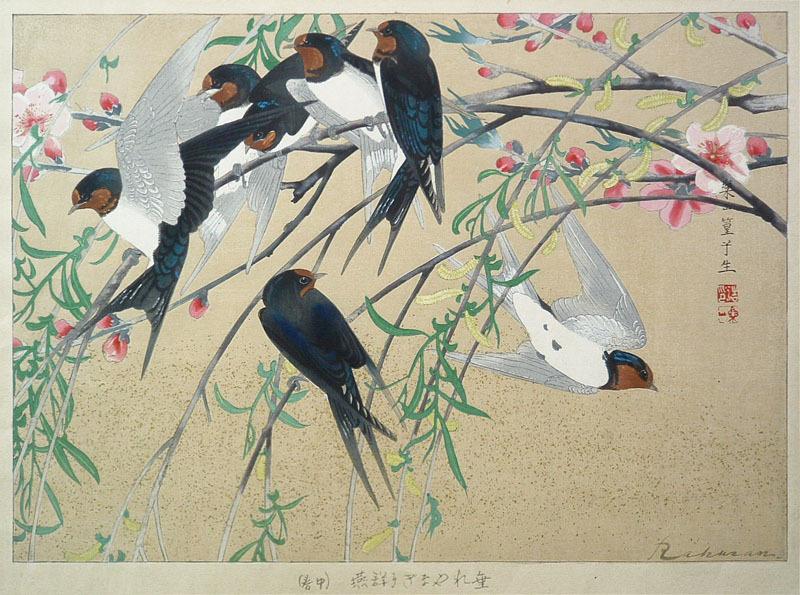
Sources:
https://www.japantimes.co.jp/life/2004/09/09/environment/barn-swallow-tsubame
https://www.japantimes.co.jp/life/2007/03/28/environment/tree-sparrow
https://www.japantimes.co.jp/life/2005/01/13/environment/japanese-white-eye

